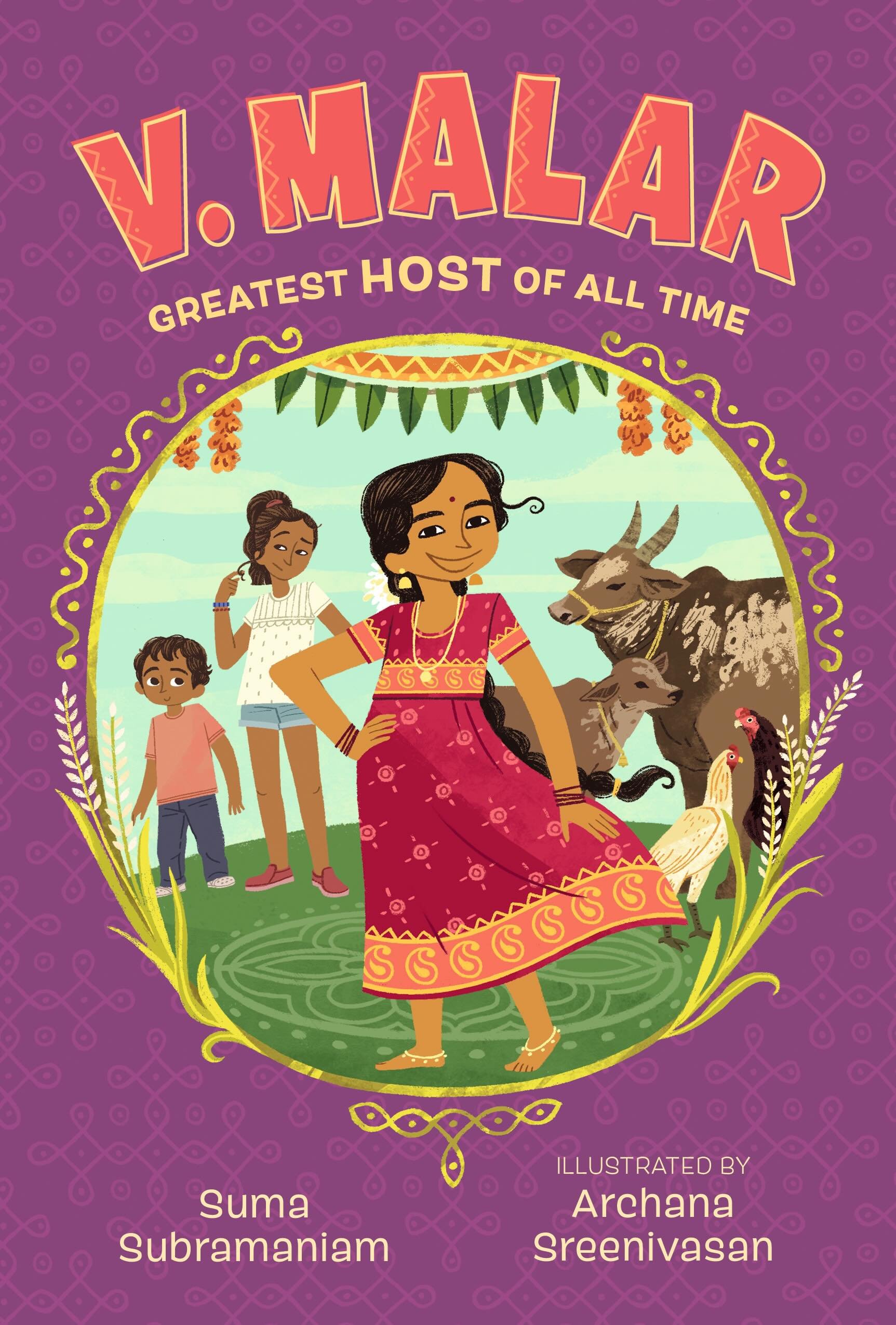Process Talk with Jen: Suma Subramaniam on V. Malar: Greatest Host of All Time
[Posted by Jen Breach for Writing With a Broken Tusk]
Suma Subramaniam’s V. Malar: Greatest Host of All Time is a glorious celebration of Southern Indian culture, diaspora, and family, all told in a personal, intimate story between a young Indian girl and the American-raised cousin she is meeting for the first time. The layers are nuanced and stunningly brought to life.
[Jen] V. Malar’s story is set during her village's recovery from a cyclone (or tropical hurricane). It is not a main plot point in the story, but it is the idea that opens the book, and the cyclone's repercussions are felt throughout the book around the village.
[Suma] I wanted to highlight the impact of rising global temperatures and climate change on the planet and how people in different parts of the world are responding to it, which is a valuable STEM lesson.
India has a coastline spread of approximately 7,516 kilometers (4,670 miles), of which about 5700 kilometers (3,541 miles) are vulnerable to cyclones of different extents of intensity. Every year, India experiences 2 to 3 tropical cyclones on average with at least one of them severely impacting the surface of the land. The reason for the increasing frequency of cyclones since the start of the 21st century has been identified as climate change.
Cyclones make landfall and bring heavy downpours, uprooting trees. They trigger floods, school closures, and travel bans. They cause significant damage to infrastructure, transportation, and communication. They also result in loss of crops and livelihood for the rural people. These catastrophic events represent not only India’s but also the world’s toughest natural threats.
In the story, Malar’s family adopts a holistic rehabilitation plan to tackle their challenges. Her family chooses resilience over despair, and they live sustainably while combatting climate change.
[Jen] Certainly a reality of life that children like V. Malar will become increasingly familiar with in their day to day life. And thematically, it ties beautifully into the theme of Pongal as a harvest festival and as a time for making the best with what you've got. The day this post is released is Thai Pongal, the second and most important day of the Pongal festival in Southern India.
[Suma] How timely! Thank you.
I chose Pongal because I wanted to provide children a window, mirror, and sliding door to one of the biggest holiday celebrations of South India when crops are harvested in mid-January.
In the story, although Malar’s cousins trace their origins to India, they’re unaware of the cultural traditions of the four-day holiday that takes place every year during the Tamil month called Thai. In Seattle [the cousin’s home], they don’t celebrate the festival elaborately as they would in India and they’re unable to take the school days off for the celebration. Through their eyes, I wanted to give readers the holiday experience. This story is also more than a story about festivities. It’s a story full of SEL lessons about diaspora when cousins from opposite hemispheres meet, cherishing family time, practicing gratitude, recognizing the value of what one has, and seeing things from another person’s perspective.
[Jen] The story has many parallels to your own life: you were born in Southern India and now live in Seattle, reflecting the two locations in the book; Malar's name means "flower," just like yours; and you have used the Kaveri River, which runs through Malar's village, as a focal point (physically and metaphorically) in other stories. How consciously do you mine personal connection when you write?
[Suma] I’m grateful you noticed. The longing for my childhood home more than eight thousand miles away has morphed into a desire for a deeper experience of stories that resonate with me. Having lived in India and the US for almost two decades, I’m now embedded in both cultures. I spend hours, days, months, and years on research and try to get as authentic as I can with the worldbuilding details.
It is also necessary to write about all kinds of emotions to create a believable character with real, human struggles who must overcome life’s obstacles. Choosing what to keep and what to leave out is a delicate balancing act. Huge thank you to Martine Leavitt, A.M. Jenkins, Jane Kurtz, and Margaret Bechard for teaching me the value of these four habits:
1. I read poetry before I begin writing every day.
2. I do side-writing exercises.
3. I handwrite in a journal.
4. I study scene structure from time to time.
Sometimes, these exercises help me confront my own shadows. Other times, I experiment and play to discover the character’s voice. These practices help me loosen up if I’m stuck or if I have a creative block.
[Jen] Rich connections to place and self that I look forward to seeing in upcoming V. Malar stories.
